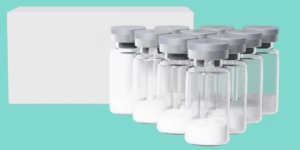Anodizing is a well-known electrochemical process that enhances the surface properties of aluminum and its alloys. Clear anodizing methods stand out for their ability to provide a transparent, protective, and durable finish to aluminum surfaces. This process not only enhances the appearance of aluminum but also significantly improves its resistance to corrosion, wear, and environmental factors.
This article will discuss clear anodizing, how it works, and how to obtain clear anodized services for aluminum components. Let’s get right into it.
What is Clear Anodized?
Clear anodizing, also known as natural or plain anodizing, involves creating a transparent anodic oxide layer on the surface of aluminum. Unlike colored anodizing service, which introduces dyes to achieve various hues, clear anodizing maintains the natural metallic appearance of aluminum while enhancing its properties. The result is a clean, bright, shiny finish showcasing the metal’s inherent aesthetic qualities.
The clear anodic layer is typically very thin, ranging from 0.0001 to 0.001 inches. This layer is porous at the microscopic level, which allows it to absorb and diffuse light, giving the aluminum a lustrous and reflective surface. The transparency of the anodic layer makes it ideal for applications where the natural look of aluminum is desired, along with added protection and durability.
How Does Clear Anodized Work?
Clear anodizing involves an electrochemical process that converts the aluminum surface into an anodic oxide layer. The process can be broken down into several key steps:
Cleaning and Preparation
The aluminum surface is thoroughly cleaned to remove contaminants, oils, or oxidation. This step ensures that the anodizing process proceeds uniformly and without defects. The cleaning process may involve alkaline or acidic cleaners and rinsing with deionized water.
Etching and Desmutting
The aluminum is then etched to remove a thin layer of the metal, creating a smooth and uniform surface. This step may be followed by desmutting, which involves removing any remaining impurities or residues from the etching process.
Anodizing
The prepared aluminum is immersed in an electrolyte solution, typically sulfuric acid and an electric current is passed through the solution. The aluminum acts as the anode, and the electrical current causes oxygen ions from the electrolyte to combine with the aluminum atoms on the surface. This reaction forms a layer of aluminum oxide (Al2O3) on the surface of the metal.
Sealing
After anodizing, the porous anodic layer is sealed to close its microscopic pores. This sealing step can be performed using hot water, steam, or chemical sealing solutions. Sealing enhances the corrosion resistance of the anodic layer and prevents it from absorbing contaminants.
Final Rinse and Drying
The anodized aluminum is thoroughly rinsed to remove any remaining chemicals, and then it is dried. The result is a clear, protective, and durable anodic oxide layer that enhances the appearance and performance of the aluminum.
The thickness of the anodic layer can be controlled by adjusting the anodizing time and current density. Thicker layers provide greater protection and durability, making clear anodizing suitable for various applications, from architectural components to consumer electronics.
How to Get Clear Anodized Service
Obtaining clear anodized services involves finding a reputable anodizing provider specializing in aluminum surface treatments. Here are the steps to get clear anodized services for your aluminum components:
Identify Your Requirements
Determine the specific requirements for your clear anodized project. Consider factors such as the type of aluminum alloy, desired thickness of the anodic layer, surface finish, and any additional properties needed (e.g., increased corrosion resistance or electrical insulation).
Research Anodizing Providers
Look for anodizing providers with experience and expertise in clear anodizing. Check their credentials, capabilities, and previous work to ensure they can meet your project specifications. Online reviews, industry associations, and peer recommendations can help identify reliable providers.
Request Quotes and Samples
Contact potential anodizing providers to request quotes for your project. Provide detailed information about your requirements and ask for samples of clear anodized aluminum to assess the quality of their work. Comparing quotes and samples will help you make an informed decision.
Evaluate Quality and Capabilities
Evaluate the quality of the clear anodized samples, paying attention to the uniformity, clarity, and finish of the anodic layer. Ensure that the provider can handle the volume and size of your components and inquire about their quality control processes to guarantee consistent results.
Place an Order and Provide Specifications
Once you have selected an anodizing provider, place your order and provide detailed specifications for your clear anodized project. Include information such as the type of aluminum, desired anodic layer thickness, and any requirements for the finish.
Review and Approve the Final Product
After the anodizing process, review the final product to ensure it meets your specifications. Check for uniformity, clarity, and overall quality of the anodic layer. If any issues arise, work with the anodizing provider to address and resolve them.
Benefits of Clear Anodizing
Clear anodizing offers numerous benefits, making it a popular choice for various applications. Understanding these benefits can help you appreciate the value of this surface treatment and why it is widely used across different industries.
Enhanced Corrosion Resistance
One of the primary advantages of clear anodizing is the significant improvement in corrosion resistance. The anodic oxide layer acts as a barrier, protecting the aluminum from environmental factors such as moisture, chemicals, and pollutants. This makes clear anodized aluminum is ideal for outdoor and marine applications where exposure to harsh conditions is common.
Increased Durability
Clear anodizing enhances the durability of aluminum components by providing a hard, wear-resistant surface. This increased durability extends the lifespan of the components, reducing the need for frequent replacements and maintenance. The hard anodic layer can withstand abrasion and mechanical wear, making it suitable for high-traffic areas and industrial applications.
Improved Aesthetic Appeal
Clear anodizing maintains the natural metallic appearance of aluminum while enhancing its brightness and reflectivity. The transparent anodic layer gives aluminum a sleek and modern look, making it an attractive choice for architectural elements, consumer electronics, and decorative items. Achieving a consistent and uniform finish further enhances the aesthetic appeal of clear anodized aluminum.
Better Adhesion for Coatings and Adhesives
The porous nature of the anodic layer improves the adhesion of paints, coatings, and adhesives to the aluminum surface. This makes clear anodized aluminum an excellent substrate for additional surface treatments, such as powder coating or painting. The enhanced adhesion ensures that the coatings and adhesives remain intact and do not peel or flake off over time.
Environmentally Friendly
Clear anodizing is an environmentally friendly process that does not produce hazardous by-products. The use of non-toxic electrolytes and minimal waste generation makes it a sustainable choice for surface treatment. Additionally, clear anodized components’ durability and extended lifespan contribute to reduced material consumption and waste.
Common Applications of Clear Anodizing
Clear anodizing is widely used in various industries due to its versatility and beneficial properties. Here are some common applications where clear anodized aluminum is preferred:
Architectural Components
Clear anodized aluminum is extensively used in architectural applications, including window frames, curtain walls, door handles, and decorative facades. The process enhances the durability and appearance of these components, making them resistant to weathering and corrosion. The sleek and modern finish of clear anodized aluminum adds to the aesthetic appeal of buildings and structures.
Consumer Electronics
Clear anodizing benefits the electronics industry, including smartphones, laptops, tablets, and cameras. The anodic layer protects the aluminum casing from scratches, wear, and corrosion, ensuring electronic devices’ longevity and pristine appearance. The reflective finish of clear anodized aluminum also adds a premium look and feel to consumer electronics.
Automotive and Aerospace
Clear anodized aluminum is used for various components in the automotive and aerospace industries, including trim, interior fittings, engine parts, and structural elements. Its enhanced durability and corrosion resistance make it suitable for demanding environments where exposure to heat, chemicals, and mechanical stress is common.
Industrial Equipment
Clear anodizing is applied to industrial equipment and machinery to improve performance and longevity. Components such as gears, housings, and tooling parts benefit from the increased wear resistance and durability provided by the anodic layer. Clear anodized aluminum also offers better adhesion for lubricants and coatings, enhancing the functionality of industrial equipment.
Marine Applications
Clear anodized aluminum is ideal for marine applications where exposure to saltwater and harsh marine environments is a concern. Boat fittings, railings, and marine hardware benefit from clear anodized aluminum’s corrosion resistance and durability. The process ensures that these components maintain their appearance and functionality over time, even in challenging conditions.
Conclusion
Clear anodizing is an effective and versatile surface treatment that enhances the appearance and performance of aluminum components. By creating a transparent anodic oxide layer, clear anodizing provides a durable, corrosion-resistant, and aesthetically pleasing finish showcasing aluminum’s natural beauty.
Whether you need clear anodized aluminum for architectural elements, consumer electronics, or industrial components, selecting a reputable anodizing provider and specifying your requirements accurately will ensure high-quality results. The clear anodic layer not only enhances the visual appeal of aluminum but also provides long-lasting protection against environmental factors, making it a valuable surface treatment for a wide range of applications.




